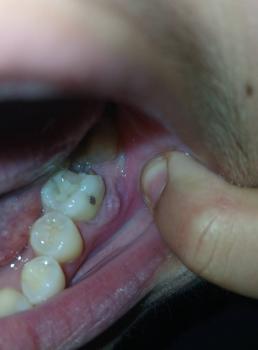Building Confidence One Smile at a Time.
Avoid Dental Implant Disasters: Nerve & Sinus Mapping Explained

Nerve & Sinus Mapping – Avoiding Dangerous Complications in Dental Implants
Why Nerve & Sinus Mapping is Non-Negotiable for Implant Safety
Dental implants have a 95%+ success rate—when done correctly. However, without precise nerve and sinus mapping, patients risk permanent numbness, chronic pain, or even sinus perforation. Advanced 3D imaging (CBCT scans) and expert planning are the only ways to prevent these avoidable disasters.
The Hidden Risks of Skipping Proper Mapping
-
Permanent Nerve Damage – A misplaced implant can crush the inferior alveolar nerve, causing lifelong numbness (paresthesia).
-
Sinus Perforation – Upper jaw implants that puncture the maxillary sinus lead to infections, sinusitis, or implant failure.
-
Chronic Pain & Failed Implants – Poor placement may require emergency removal and costly revisions.
"I’ve seen patients who went to ‘cheap’ clinics without proper mapping—they ended up with nerve damage and needed corrective surgery. Saving money isn’t worth the risk."
— Dr. [Name], Oral Surgeon & Implant Specialist
How Nerve & Sinus Mapping Works: The Science Behind Safe Implants
1. 3D CBCT Scans – The Gold Standard
-
Reveals exact nerve pathways and sinus locations in millimeter precision.
-
Helps dentists avoid "danger zones" where implants could cause irreversible harm.
2. Computer-Guided Implant Planning
-
Uses AI-assisted software to simulate implant placement before surgery.
-
Creates a custom surgical guide for ultra-precise drilling.
3. Real-Time Monitoring During Surgery
-
Some clinics now use piezosurgery tools (vibration-based cutting) to avoid nerve contact.
Worst-Case Scenarios: What Happens When Mapping is Ignored?
Case 1: The Numb Lip (Nerve Damage)
-
A patient gets an implant too close to the mandibular nerve.
-
Result: Partial facial numbness, difficulty speaking, and loss of taste sensation.
-
Solution: Implant removal + nerve decompression surgery (if caught early).
Case 2: The Sinus Headache (Sinus Perforation)
-
An upper implant pierces the sinus cavity.
-
Result: Chronic sinus infections, nasal drainage, and implant failure.
-
Solution: Sinus lift surgery + bone graft before reattempting the implant.
Case 3: The Failed Implant (Poor Planning)
-
A dentist places an implant in weak bone without checking sinus proximity.
-
Result: Implant loosens within months, requiring a full replacement.
-
Solution: Bone graft + CBCT scan before redoing the procedure.
Critical Thinking: Are All Dentists Equipped for Safe Implant Placement?
General Dentists – May lack CBCT scanners or surgical expertise.
✅ Implant Specialists (Prosthodontists/Oral Surgeons) – Trained in 3D mapping and nerve preservation.
Ask Before Booking:
✔ "Do you use CBCT scans for every implant?"
✔ "How do you ensure you avoid nerves and sinuses?"
✔ "What’s your complication rate?"
Expert Advice Footer: How to Choose a Safe Implant Clinic
"Never rush into implants. Always demand a CBCT scan, ask about the surgeon’s experience, and check reviews. Your safety is worth the extra cost."
— Dr. [Name], Maxillofacial Surgeon
Trusted 5-Star Clinics in Cebu Will Offer:
Pre-Surgical 3D Imaging (No blind placements!)
Transparent Risk Disclosure (No sugarcoating complications.)
Post-Op Follow-Ups (To catch issues early.)
Final Warning: Don’t Gamble With Your Nerves & Sinuses
Nerve and sinus mapping isn’t optional—it’s the difference between a successful implant and a medical nightmare. If your dentist doesn’t prioritize CBCT scans and precision planning, walk away.
Need a Safe Implant in Cebu?
*5-Star Reviews*
Cebuano Translation:
Nerve & Sinus Mapping – Paglikay sa Delikadong Komplikasyon sa Dental Implants
Ngano nga Dili Madugay ang Nerve & Sinus Mapping para sa Kaluwasan sa Implants
Ang dental implants adunay kapin sa 95% nga success rate—kung sakto ang pagbuhat. Apan kung walay tukmang nerve ug sinus mapping, ang pasyente mahimong mag-antos sa permanente nga pagkawalay paminaw, chronic nga kasakit, o bisan pa perforation sa sinus. Ang advanced nga 3D imaging (CBCT scans) ug eksperyensyadong pagplano ra ang paagi aron malikayan kini nga mga disgrasya.
Ang Nakatagong mga Risgo Kung Ipasibya ang Hustong Mapping
-
Permanenteng Kadaot sa Nerve – Ang sayop nga butang sa implant mahimong mopisil sa inferior alveolar nerve, hinungdan sa tibuok kinabuhing pagkawalay paminaw (paresthesia).
-
Sinus Perforation – Ang implants sa ibabaw nga apapangig nga mosulod sa maxillary sinus mahimong hinungdan sa impeksyon, sinusitis, o kapakyasan sa implant.
-
Chronic nga Kasakit ug Napakyas nga Implants – Ang bati nga pagpahimutang mahimong magkinahanglan ug emergency removal ug mahal nga pag-usab.
"Nakita nako ang mga pasyente nga nikuha ug ‘barato’ nga klinika nga walay tarong nga mapping—natapos sila nga adunay nerve damage ug nanginahanglan corrective surgery. Dili angay ipusta ang imong kahimsog aron lang makatigom." — Dr. [Name], Oral Surgeon & Implant Specialist
Giunsa Pagtrabaho ang Nerve & Sinus Mapping: Ang Siyensya sa Luwas nga Implants
-
3D CBCT Scans – Ang Gold Standard
Nagpadayag sa eksaktong agianan sa nerves ug lokasyon sa sinus sa millimeter nga precision. -
Computer-Guided Implant Planning
Naggamit ug AI-assisted software aron isimulasyon ang implant placement sa wala pa ang surgery. -
Real-Time Monitoring Atol sa Surgery
Ang ubang klinika naggamit na og piezosurgery tools (vibration-based cutting) aron malikayan ang contact sa nerve.
Pinakagrabe nga mga Kaso Kung Wala Mapping:
-
Case 1: Numb Lip – Implant duol sa mandibular nerve -> nawagtang ang paminaw ug panlasa.
-
Case 2: Sinus Headache – Implant nisulod sa sinus -> chronic infections.
-
Case 3: Failed Implant – Gipahimutang sa hinay nga bukog -> naluag ang implant.
Critical Thinking: Andam ba Tanan Dentists sa Luwas nga Implant Placement?
-
General Dentists – Wala kasagaran CBCT o surgical expertise.
-
Implant Specialists – Espesyalisado sa 3D mapping ug nerve preservation.
Mga Pangutana Sa Wala Pa Magpa-Book: ✔ "Naggamit ba mo ug CBCT scan sa tanan nga implant?"
✔ "Giunsa nimo paglikay ang nerves ug sinuses?"
✔ "Pila ang inyong complication rate?"
Eksperto nga Tambag:
"Never dali-dali sa implants. Siguruha ang CBCT scan ug tan-awa ang kasinatian sa surgeon. Ang imong kahimsog bililhon kaysa gasto." — Dr. [Name], Maxillofacial Surgeon
Trusted 5-Star Clinics sa Cebu Maghatag:
-
Pre-Surgical 3D Imaging
-
Transparent Risk Disclosure
-
Post-Op Follow-Ups
Final Warning:
Ayaw sugal sa imong nerves ug sinuses. Kung walay CBCT ug precision planning, lakaw nalang.
Nangita ka ug Luwas nga Implant sa Cebu?
5-Star Reviews
Tagalog Translation:
Nerve & Sinus Mapping – Pag-iwas sa Mapanganib na Komplikasyon sa Dental Implants
Bakit Hindi Puwedeng Balewalain ang Nerve & Sinus Mapping para sa Kaligtasan ng Implants
Ang dental implants ay may success rate na higit sa 95%—kung tama ang pagkakagawa. Ngunit kung walang tamang nerve at sinus mapping, maaaring magkaroon ng permanenteng pamamanhid, chronic pain, o perforation sa sinus ang pasyente. Advanced na 3D imaging (CBCT scans) at maingat na pagpaplano lamang ang paraan para maiwasan ang mga sakunang ito.
Mga Nakatagong Panganib ng Hindi Pagsunod sa Wastong Mapping
-
Permanenteng Pinsala sa Nerve – Kapag mali ang pagkakabit ng implant, maaari nitong maipit ang inferior alveolar nerve, nagdudulot ng habambuhay na pamamanhid (paresthesia).
-
Sinus Perforation – Ang implant sa upper jaw na tumagos sa maxillary sinus ay pwedeng magdulot ng impeksyon, sinusitis, o implant failure.
-
Chronic Pain at Palpak na Implants – Ang maling pagkakalagay ay maaaring mangailangan ng emergency removal at magastos na revision.
"May mga pasyente akong nakita na pumunta sa mga 'murang' klinika na walang tamang mapping—natapos sila na may nerve damage at kailangan pa ng corrective surgery. Hindi sulit ang pagtitipid kung kaligtasan ang kapalit." — Dr. [Name], Oral Surgeon & Implant Specialist
Paano Gumagana ang Nerve & Sinus Mapping: Ang Siyensya ng Ligtas na Implants
-
3D CBCT Scans – Ang Gold Standard
Ipinapakita ang eksaktong daanan ng mga nerves at lokasyon ng sinus sa millimeter-level na detalye. -
Computer-Guided Implant Planning
Gumagamit ng AI-assisted software para isimula ang paglalagay ng implant bago pa ang aktwal na operasyon. -
Real-Time Monitoring Habang Surgery
Gumagamit na ang ibang klinika ng piezosurgery tools (vibration-based cutting) para makaiwas sa nerve contact.
Pinakamasahol na Mga Kaso Kapag Walang Mapping:
-
Case 1: Numb Lip – Masyadong malapit sa mandibular nerve -> nawalan ng sensasyon at panlasa.
-
Case 2: Sinus Headache – Implant na tumagos sa sinus -> chronic infection.
-
Case 3: Failed Implant – Mahinang buto, hindi na-check -> bumigay ang implant.
Critical Thinking: Lahat ba ng Dentista Handang Maglagay ng Ligtas na Implants?
-
General Dentists – Maaaring walang CBCT scanners o sapat na surgical skills.
-
Implant Specialists – Eksperto sa 3D mapping at nerve preservation.
Mga Itanong Bago Magpa-Book: ✔ "Gumagamit ba kayo ng CBCT scan para sa bawat implant?"
✔ "Paano kayo umiiwas sa nerves at sinuses?"
✔ "Ano ang complication rate ninyo?"
Ekspertong Payo:
"Huwag magmadali sa pagpapa-implant. Siguraduhin mong may CBCT scan, tingnan ang karanasan ng surgeon, at basahin ang mga review. Mas mahalaga ang kaligtasan kaysa sa gastos." — Dr. [Name], Maxillofacial Surgeon
Trusted 5-Star Clinics sa Cebu Nag-aalok ng:
-
Pre-Surgical 3D Imaging
-
Transparent Risk Disclosure
-
Post-Operative Follow-Ups
Final Warning:
Huwag ipagsapalaran ang iyong nerves at sinuses. Kung walang CBCT at tamang plano ang dentista, umalis ka na.
Kailangan mo ba ng Ligtas na Implant sa Cebu?
5-Star Reviews
Japanese Translation:
神経・副鼻腔マッピング – インプラント手術の危険な合併症を防ぐために
インプラントの安全性を守るために神経・副鼻腔マッピングは必須
歯科インプラントは正しく行えば成功率95%以上。しかし、正確な神経・副鼻腔マッピングを行わないと、患者は永久的な麻痺、慢性的な痛み、または副鼻腔穿孔のリスクにさらされます。高度な3Dイメージング(CBCTスキャン)と専門的な計画だけが、これらの悲劇を防ぐ方法です。
マッピングを怠った場合の隠れたリスク
-
神経損傷 – インプラントが下歯槽神経を圧迫すると、永久的な感覚麻痺(知覚異常)を引き起こします。
-
副鼻腔穿孔 – 上顎のインプラントが上顎洞に穿孔すると、感染症、副鼻腔炎、またはインプラント失敗を招きます。
-
慢性痛とインプラント失敗 – 不適切な配置により緊急撤去や高額な再手術が必要になります。
「安いクリニックに行って適切なマッピングを受けなかった患者を見てきました。結果、神経損傷を負い、修正手術が必要になりました。節約のために安全を犠牲にするべきではありません。」 — Dr. [Name](口腔外科医・インプラント専門医)
神経・副鼻腔マッピングの仕組み:安全なインプラントのための科学
-
3D CBCTスキャン – ゴールドスタンダード
ミリ単位で神経経路と副鼻腔の正確な位置を可視化。 -
コンピューターガイド・インプラントプランニング
AI補助ソフトウェアで事前にインプラント配置をシミュレーション。 -
手術中のリアルタイムモニタリング
一部のクリニックでは、神経に触れないよう振動カットツール(ピエゾサージェリー)を使用。
最悪のケース:マッピングを無視すると?
-
ケース1: 麻痺した唇(神経損傷)
-
ケース2: 副鼻腔頭痛(副鼻腔穿孔)
-
ケース3: 失敗したインプラント(不適切な計画)
クリティカルシンキング:すべての歯科医が安全なインプラント手術に対応できるか?
-
一般歯科医 – CBCTスキャナーや外科スキル不足の場合あり。
-
インプラント専門医 – 3Dマッピングと神経保護に熟練。
予約前に必ず聞くべき質問: ✔「すべてのインプラント手術にCBCTスキャンを使用していますか?」
✔「神経や副鼻腔をどのように避けていますか?」
✔「合併症率はどのくらいですか?」
専門医のアドバイス:
「インプラント手術を急がないでください。必ずCBCTスキャンを要求し、外科医の経験を確認し、口コミをチェックしましょう。安全はコスト以上に価値があります。」 — Dr. [Name](顎顔面外科医)
信頼できるセブ島の5つ星クリニックは提供します:
-
手術前の3Dイメージング
-
合併症リスクの透明な説明
-
術後フォローアップ
最終警告:
神経と副鼻腔を危険にさらさないでください。CBCTと精密計画を重視しない歯科医からは離れましょう。
セブ島で安全なインプラントを探していますか?
5つ星レビューあり












